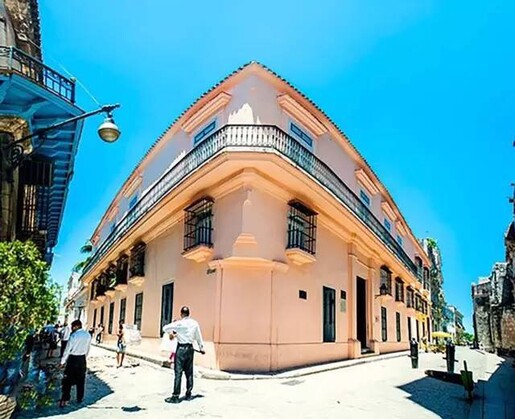Group Exhibition Centro de Arte Contemporáneo Wifredo Lam, Havana, Cuba
ENEMA Collective, Mezclilla, Havana and Camaguey, Cuba, 2001-02. Performance. Courtesy of ENEMA Collective. © ENEMA Collective.
Ensemble sin órganos
(Ensemble without organs)
July 7–24, 2016
Centro de Arte Contemporáneo Wifredo Lam, Havana
San Ignacio No.22, Esquina a Empedrado
Plaza de la Catedral
Havana
Cuba
Curated by Blanca Victoria López and Victor Wang
Participating artists include:
Ana Mendieta (Cuba) / Anne Teresa De Keersmaeker (Belgium) / Carlos Martiel (Cuba) / Cibelle Cavalli Bastos (Brasil) / Grace Schwindt (Germany) / Grupo Enema (Cuba) / Habacuc Guillermo Vargas (Costa Rica) / Hu Xiangqian (People's Republic of China) / Héctor Remedios (Cuba) / Javier Calvo Sandí (Costa Rica ) / Koki Tanaka (Japan ) / Korakrit Arunanondchai ( Thailand ) / Lawrence Abu Hamdan (Jordan) / Leandro Soto Ortiz (Cuba) / Manuel Mendive (Cuba) / Rosana AntolÍ (Spain) / Shozo Shimamoto (Japan) / Susana Pilar Delahante Matienzo (Cuba) / Trisha Brown(USA) / VALIE EXPORT (Austria) / Xu Zhen (People's Republic of China) / Yves Klein (France) /Yvonne Rainer (USA)
In a live exhibition that unfolds over 18 days, the Centro de Arte Contemporáneo Wifredo Lam is proud to presents Ensemble sin órganos (Ensemble without organs), the first international performance-based exhibition to take place in the museum, an intergenerational exhibition that explores the simultaneous histories and trajectories that have shaped what has been termed "artes vivas," live actions, "acciones," and performance art across different geographies. The exhibition utilises duration as a format to connect and activate different spaces in the museum, bringing together emerging and established international and local artists alongside a variety of media, historical and archival material and documentation.
Rather than trying to define what performance art and "artes vivas" are today, the exhibition brings together artists and collectives from different generations representing a diverse range of practices dating from the 1960s to the present. The show has been conceived as developing over time, and is divided into five constellations that are networked throughout the galleries of the museum. These constellations are: Instructions and Language; Living Technologies and the Body; Ritual and Dance; Social Engagement and Audiences; Reenactments and Live Histories. By utilising networks, the show seeks to open up a dialogue between practices and movements that were happening concurrently, with international links to the present; each, however, represents unique local conditions and environments with different lineages and influences. Many of the artists and artworks in the exhibition are being presented for the first time in Cuba.
These networked themes will be reflected in the design and layout of the exhibition, in which time and space have been allocated for these terms to be further explored and contested. For example, constellations such as Reenactments and Live Histories will consider the relationship between the historicising of performance, how performance is remembered, collected and archived, and its connection to the present: how can museums then exhibit and revisit earlier performance works for new audiences? The constellation will also feature historically significant Cuban artists and collectives such as Grupo Enema and Ana Mendieta.
More Pictures:





